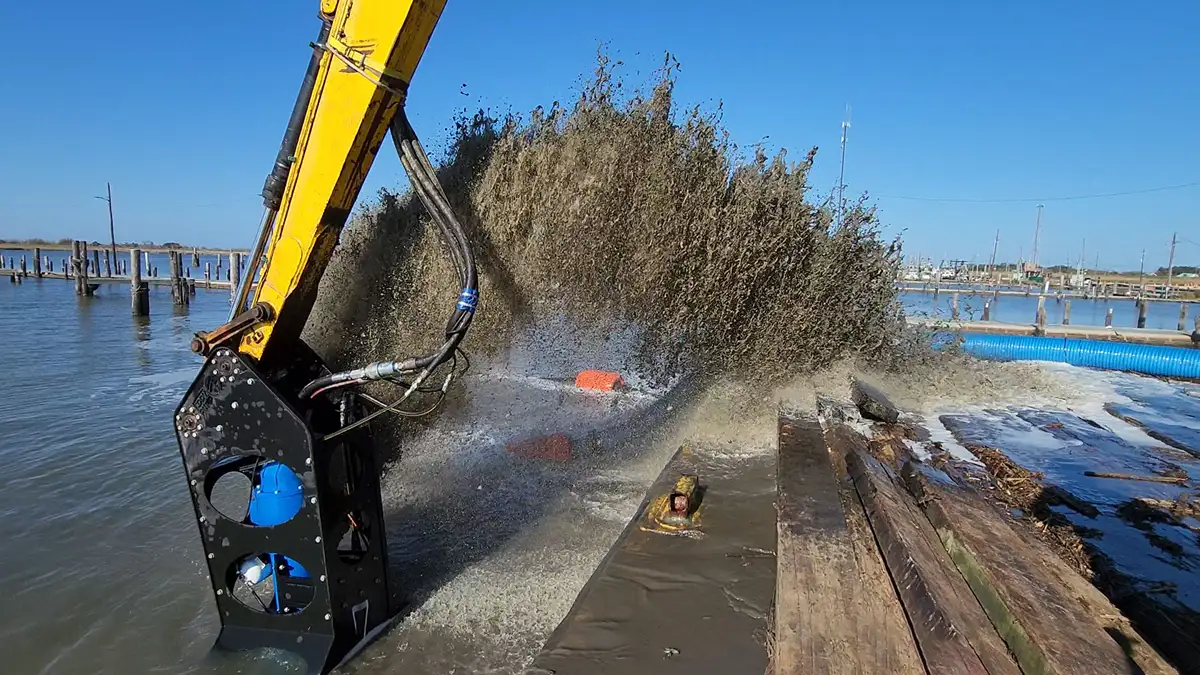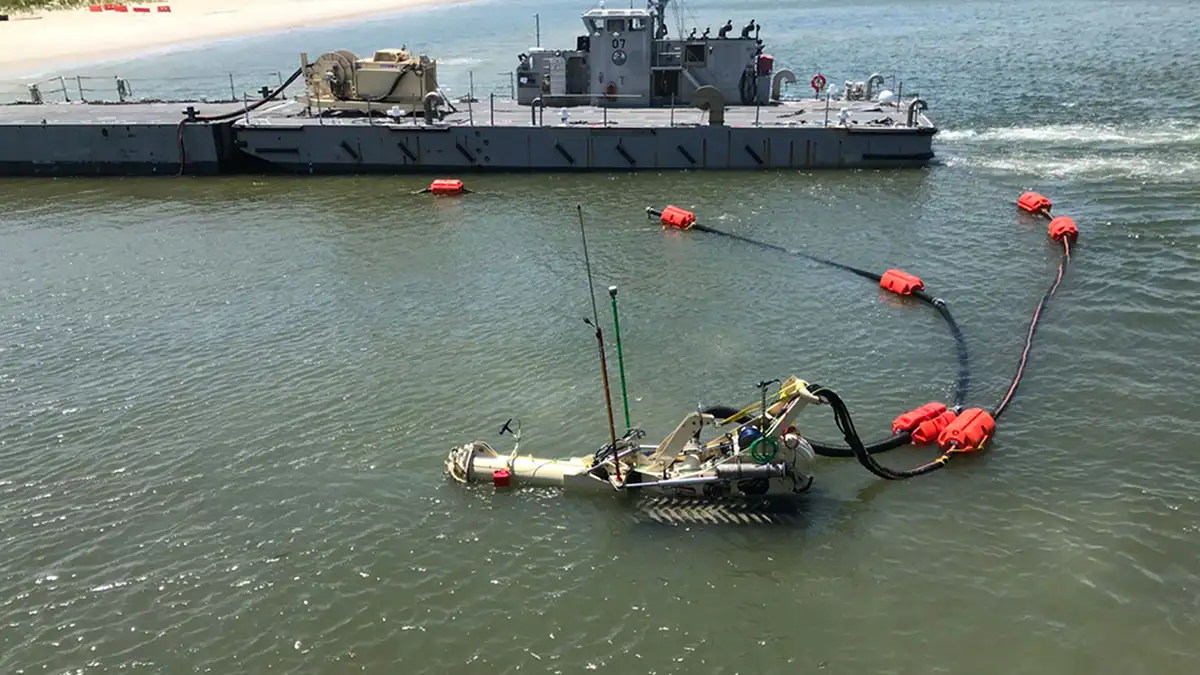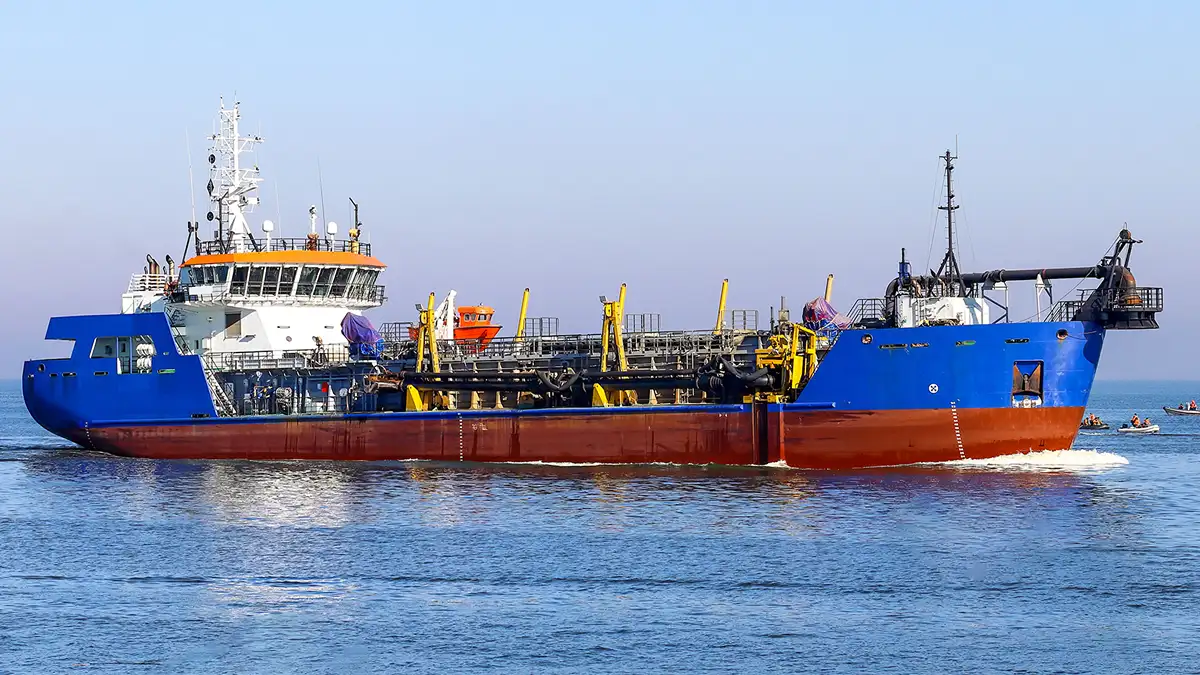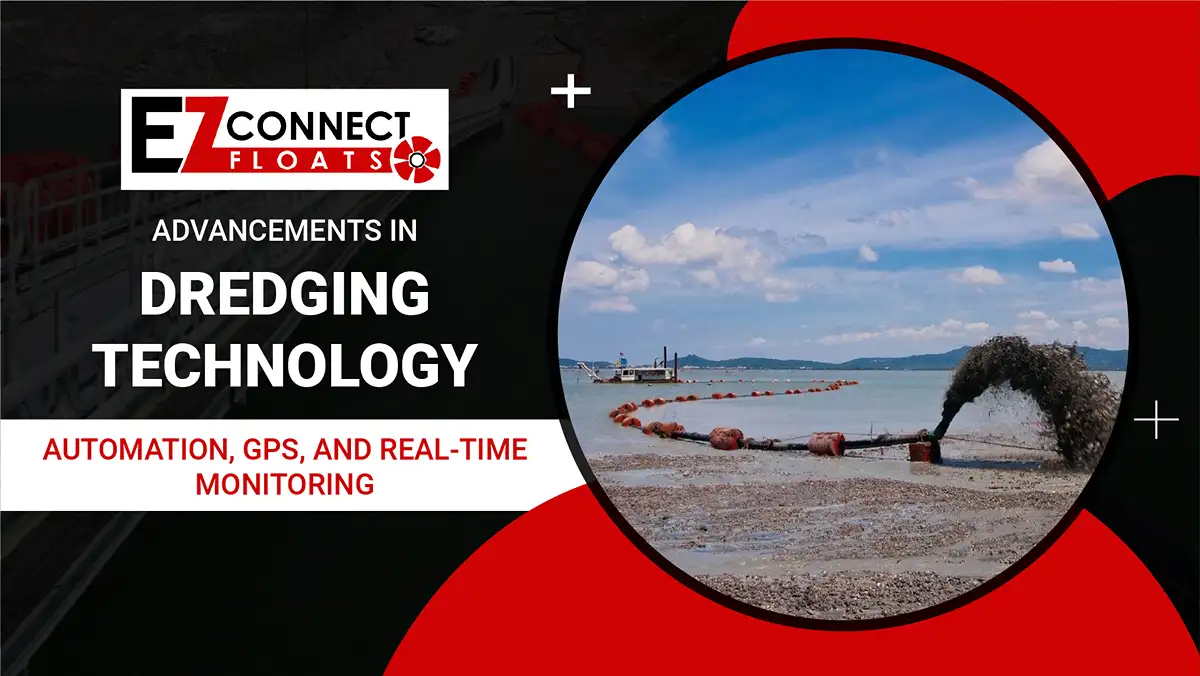
Advancements in Dredging Technology: GPS & Automation
- Why Dredging Tech Matters in 2025
- What Is Modern Dredging Technology?
- Core Technological Advances Reshaping Dredging
- Application Benefits Across Key Industries
- Remote Operations and Cloud Connectivity
- Sustainability and Compliance Built Into Dredging Equipment
- Procurement and Project Strategy: Choosing the Right Tech
- Driving the Future of Infrastructure with Advanced Dredging Technology
- Why Dredging Tech Matters in 2025
- What Is Modern Dredging Technology?
- Core Technological Advances Reshaping Dredging
- Application Benefits Across Key Industries
- Remote Operations and Cloud Connectivity
- Sustainability and Compliance Built Into Dredging Equipment
- Procurement and Project Strategy: Choosing the Right Tech
- Driving the Future of Infrastructure with Advanced Dredging Technology
Why Dredging Tech Matters in 2025
In 2025, dredging technology is no longer a niche concern; it is a strategic asset across multiple critical infrastructure sectors. From managing mining tailings to maintaining naval bases, dredging plays a crucial role in ensuring operational continuity, safety, and environmental compliance. Industries such as oil and gas, maritime defense, municipal works, and heavy civil engineering increasingly depend on reliable and precise sediment removal processes to maintain asset performance and regulatory alignment.
The growing demand for resource efficiency and tighter environmental regulations is placing significant pressure on operators, project contractors, and procurement leaders. Traditional methods of dredging, although proven, are often labor-intensive, fuel-intensive, and difficult to monitor in real-time. These constraints have made it difficult to scale operations cost-effectively, particularly in geographically dispersed or ecologically sensitive environments.
Modern dredging technology is answering that challenge. Today’s dredging machines incorporate advanced control systems, automation, GPS positioning, and remote diagnostics to deliver smarter and more efficient outcomes. These digital systems enable real-time monitoring and data-driven decision-making, reducing human error while improving operational visibility. For industries under pressure to deliver faster, cleaner, and more cost-effective projects, the transition to automated dredge technology is not just a trend, it’s a competitive necessity.
What Is Modern Dredging Technology?
Defining Modern Dredging Technology
Modern dredging technology encompasses the advanced systems, tools, and digital infrastructure used to remove sediments, contaminants, or debris from underwater environments with precision, efficiency, and reduced environmental impact. Moving beyond traditional manual methods, today’s dredge technologies integrate automation, remote operation, and real-time monitoring to support more intelligent and scalable dredging strategies.
From Excavation to Smart Dredging Systems
Historically, dredging was a largely mechanical process, relying on equipment such as clamshell buckets, cutter heads, and pumps, with limited data feedback. However, the evolution of dredging technology has introduced intelligent systems that are capable of self-adjustment, route optimization, and live performance tracking. These enhancements enable project teams to transition from reactive to proactive management, thereby boosting operational consistency while reducing costs.
Today’s dredging machines are far more than excavation tools—they are digitally connected platforms. Operators can now oversee dredging activities via cloud-based dashboards, receive predictive maintenance alerts, and adjust settings remotely in response to real-time conditions. This shift from analog to smart systems is revolutionizing how infrastructure, energy, and government sectors approach sediment management.
Core Components of Modern Dredge Technology
Modern dredge technologies are powered by several integrated components:
- Automation: Enables real-time decision-making, reduces operator intervention, and increases productivity.
- GPS and GIS Integration: Ensures accurate navigation, boundary management, and data mapping for compliance and reporting.
- IoT Sensors: Continuously monitor sediment load, equipment wear, and hydraulic performance.
- Cloud Connectivity: Centralizes operational data for analysis, diagnostics, and multi-site coordination.
Together, these technologies form a cohesive system that not only enhances precision and reliability but also supports strategic goals such as cost containment, sustainability, and regulatory compliance.
The Role of Advanced Dredging Machines in Industry Operations
The adoption of technologically advanced dredging machines is transforming large-scale operations across various industries, including mining, oil and gas, maritime logistics, and public infrastructure. These machines enable 24/7 operation, reduce reliance on manual labor, and lower the risk of human error in sensitive environments. Whether maintaining deepwater ports, clearing tailings ponds, or managing navigational channels, modern dredging technology delivers consistent, high-performance outcomes with measurable ROI.
By integrating automation, smart controls, and environmental monitoring, today’s dredging machines provide organizations with a future-ready solution that aligns with both operational demands and sustainability goals.
Core Technological Advances Reshaping Dredging
Automation and AI in Dredging Machines
Modern dredging technology is increasingly driven by automation and artificial intelligence, transforming traditional once into autonomous, self-optimizing systems. These smart capabilities enhance efficiency, lower operational risk, and deliver more predictable outcomes in demanding marine and industrial environments.
- Embedded AI and machine learning algorithms enable real-time route optimization based on sediment profiles, flow dynamics, and equipment load.
- Self-learning dredge technology reduces fuel consumption and minimizes unnecessary passes, cutting both costs and emissions.
- Automation lowers labor requirements while improving safety by reducing direct human interaction with hazardous environments.
- These systems are particularly effective in applications such as continuous maintenance dredging in ports and inland waterways, where accuracy and uptime are critical.
Precision via GPS and GIS Integration
One of the most significant advancements in dredging technology is the integration of high-precision GPS with Geographic Information Systems (GIS). This combination provides centimeter-level accuracy in dredging operations, significantly enhancing navigational control and reporting capabilities.
- GPS-guided dredging machines can maintain tight tolerances when operating in complex geographies such as shipping lanes, offshore installations, and port basins.
- GIS overlays provide environmental and spatial data to ensure compliance with dredging permits and marine protection regulations.
- These tools streamline audit processes by providing verifiable digital records of dredging locations, volumes, and types of sediment.
- The result is improved ROI through minimized rework, optimized material removal, and enhanced contractor accountability.
Real-Time Monitoring and Remote Operations
Dredging technology now incorporates real-time monitoring systems and remote control capabilities, fundamentally changing how operations are managed and maintained. These features are particularly valuable for large-scale, multi-site, or remote dredging projects.
- Cloud-based dashboards enable operators and project managers to remotely monitor dredging machines remotely, enhancing operational oversight and resource allocation.
- IoT-enabled sensors continuously capture data on pump performance, cutter head efficiency, sediment density, and hydraulic conditions.
- Real-time feedback supports proactive adjustments, increasing productivity and reducing material loss.
- Predictive maintenance features identify component wear or system anomalies before failures occur, reducing unplanned downtime.
- These capabilities are especially beneficial to government, defense, and industrial fleets operating in remote or high-risk environments where on-site access may be limited.
Application Benefits Across Key Industries
Mining: Continuous Operations and Sediment Management
In the mining sector, dredging technology plays a central role in maintaining productivity and environmental compliance. From managing tailings ponds to extracting valuable resources, modern mining offers a scalable and automated solution that supports round-the-clock operations.
- Advanced dredge technology helps control sediment levels in settling basins, improving water clarity and extending pond life.
- Automated dredging machines minimize manual labor, reducing both risk and cost in remote or hazardous sites.
- Real-time data enables operators to monitor slurry density, sediment flow rates, and pump performance, ensuring optimal process control.
- Dredging systems also support reclamation and dewatering efforts, making resource recovery more efficient and environmentally responsible.
Oil & Gas: Offshore Infrastructure and Pipeline Access
For the oil and gas industry, reliable access to underwater pipelines, drilling platforms, and export terminals is non-negotiable. Dredging technology enables safe navigation and sediment clearance in subsea environments that are constantly changing due to currents, tides, and construction activity.
- They, equipped with GPS and real-time monitoring, ensure precise sediment removal near sensitive assets, such as pipelines and risers.
- Automated once reduces the need for dive crews and manual equipment handling, improving safety metrics offshore.
- Integration with GIS platforms allows for detailed mapping of underwater conditions, supporting planning, permitting, and compliance reporting.
- The result is uninterrupted logistics, safer maintenance operations, and reduced environmental risk in regulated offshore zones.
Government and Military: Navigability and Strategic Readiness
Municipal and military agencies rely on modern dredging technology to ensure the operability of harbors, inland waterways, and strategic coastal infrastructure. Regular maintenance dredging is crucial for accommodating both commercial shipping and defense vessel movement.
- GPS-enabled dredging machines provide exact control over channel depth, width, and alignment essential for accommodating increasingly large vessels.
- Real-time data enables agencies to assess sedimentation trends and plan dredging intervals proactively, thereby reducing the need for emergency interventions.
- Remote monitoring features support secure operation in sensitive or restricted-access areas, such as naval bases or homeland security zones.
- Dredge technology ensures that ports remain accessible year-round, contributing to national security, trade continuity, and disaster response preparedness.
Remote Operations and Cloud Connectivity
How Cloud Dashboards Are Transforming Dredge Fleet Management
One of the most impactful innovations in modern dredging technology is the integration of remote operations and cloud-based control systems. Today’s advanced dredging machines are not just physical assets; they are connected, intelligent platforms capable of transmitting real-time operational data to centralized cloud dashboards.
These cloud-enabled interfaces enable project managers and equipment operators to monitor multiple dredging machines across various job sites remotely, without the need for physical presence. From sediment load tracking to equipment diagnostics, every critical parameter can be accessed remotely, enabling faster, data-driven decisions and reducing reliance on on-site personnel.
Fleet-wide performance can be evaluated at a glance, and maintenance schedules can be optimized based on predictive analytics derived from IoT sensor data. This level of visibility and control not only improves uptime and asset utilization but also supports regulatory compliance and project reporting requirements.
Benefits for Geographically Dispersed Teams and Defense Applications
Remote connectivity is especially valuable for organizations managing dredging technology in geographically dispersed or logistically complex environments. Government agencies, defense contractors, and energy sector operators often maintain dredging fleets across remote coastal bases, inland waterways, and offshore facilities.
With cloud-based dashboards and mobile access, teams can coordinate resources, dispatch maintenance crews, and oversee dredging performance without geographic limitations. For defense and security operations, this capability supports mission readiness and ensures strategic waterways remain operational even when direct access is limited or delayed.
Ultimately, the integration of cloud connectivity into modern dredge technology ensures that critical infrastructure projects can be managed with greater efficiency, accountability, and responsiveness—regardless of the location of the operation.
Sustainability and Compliance Built Into Dredging Equipment
Modern dredging technology is increasingly aligned with global sustainability goals and regulatory frameworks. As industries face mounting pressure to reduce emissions and operate responsibly, advanced ones are being designed with both environmental performance and compliance in mind.
One major advancement is the rise of electric and hybrid-powered dredge technology, which significantly reduces fuel consumption and greenhouse gas emissions. These next-generation systems enable operators to meet emissions targets without compromising operational capacity, making them ideal for environmentally sensitive areas or projects subject to strict regulatory oversight.
In addition to cleaner energy sources, today’s dredging equipment incorporates durable, corrosion-resistant materials that extend machine life and reduce the frequency of part replacements. This not only minimizes environmental waste but also contributes to lower total cost of ownership over time.
Modern dredging technology also supports digital documentation and integration with GIS-based monitoring tools, enabling operators to maintain full visibility of dredging activities and demonstrate regulatory compliance. From municipal agencies to offshore contractors, the ability to prove environmental responsibility is becoming as critical as the dredging itself.
Procurement and Project Strategy: Choosing the Right Tech
For procurement leaders, engineering managers, and project executives, selecting the right equipment for sediment management and underwater excavation is no longer a simple cost-based decision; it’s a strategic evaluation that must consider long-term operational efficiency, environmental performance, and adaptability across diverse project types.
The technological capabilities of modern dredging systems have advanced far beyond traditional machines. While legacy equipment may still perform basic tasks, the gap in precision, energy efficiency, automation, and digital integration continues to widen. Organizations that rely on outdated tools risk falling behind in terms of productivity, compliance readiness, and cost control.
When assessing new solutions, several core considerations should guide the procurement process. These include the extent of automation and intelligent control systems, integration with location and monitoring technologies such as GPS and real-time data feeds, energy consumption profiles, and the ability to manage equipment remotely, particularly important for large or distributed project portfolios.
Equally important is the track record of the equipment manufacturer or vendor. Decision-makers should look for partners with proven success in delivering reliable, adaptable systems that meet current regulatory expectations and can be scaled or upgraded as operational demands evolve. Predictive maintenance support, training resources, and post-deployment service also contribute significantly to long-term project success.
By transitioning to next-generation excavation and sediment removal solutions, organizations gain more than just technical upgrades; they secure greater command over operational variables, reduce unscheduled downtime, and enhance sustainability outcomes. The result is a more resilient, cost-effective asset base capable of meeting both present challenges and future demands.
Driving the Future of Infrastructure with Advanced Dredging Technology
As global infrastructure demands increase in complexity and scale, the role of cutting-edge dredging technology has become pivotal. By integrating automation, GPS-guided control systems, and real-time monitoring tools, today’s advanced ones offer a level of operational precision and efficiency that traditional methods simply cannot match.
These digital capabilities are not only enhancing the performance of dredge technology but also transforming how industries approach risk management, regulatory compliance, and cost control. With accurate data, autonomous functionality, and cloud-based oversight, project stakeholders from engineering managers to procurement heads gain full visibility and control over dredging operations in even the most challenging environments.
For decision-makers in the mining, oil and gas, defense, and public infrastructure sectors, now is the time to critically evaluate current dredging capabilities. Transitioning to modern dredging machines equipped with intelligent technology is no longer a future consideration it is a present-day imperative for maintaining competitiveness and meeting environmental and safety standards.
Organizations that invest in advanced dredge technology today position themselves for long-term gains in cost efficiency, sustainability, and operational reliability. In an era defined by data, automation, and accountability, adopting smart dredging technology is not just an upgrade—it’s a strategic move toward future-ready operations.
To explore how next-generation dredging technology can transform your operations, reduce risk, and future-proof your infrastructure projects, contact our team today for a tailored consultation.
Have Questions?
Get in touch with us now!
Related Blogs

The Role of Industrial Hose Supply in Workplace Safety and Efficiency
In high-stakes industries such as oil and gas, mining, manufacturing, dredging, and defense, industrial hoses serve as vital connectors in daily operations. Whether transferring hazardous
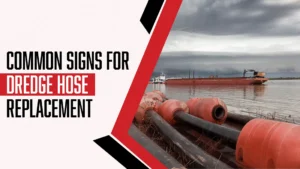
Common Signs For Dredge Hose Replacement
Dredge hose is an essential component in mining, oil and gas, and heavy industries, where it is used to transport materials such as sediment, slurry,

The Role of Automation and AI in Next-Generation Dredging Technology
Dredging technology has undergone a quiet but powerful transformation over the past decade. A purely mechanical process, which included heavy machinery, manual supervision, and reactive

